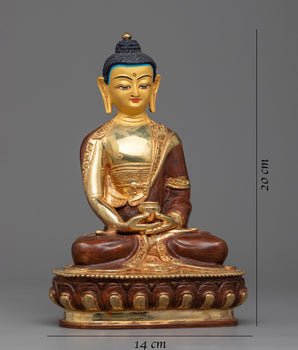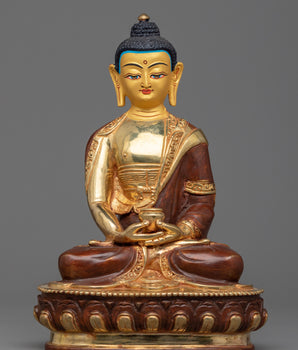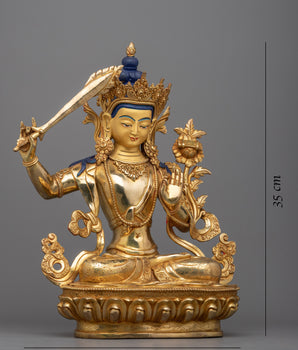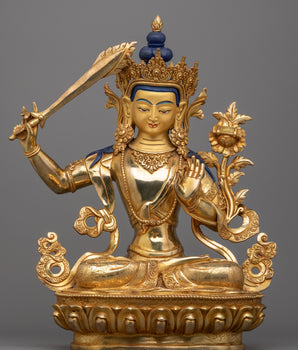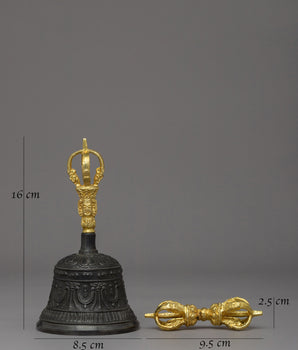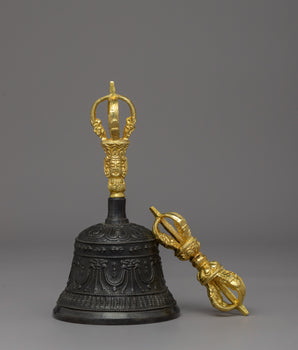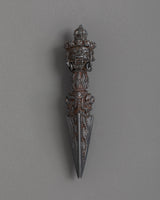
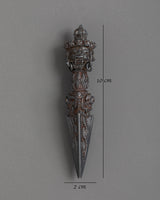
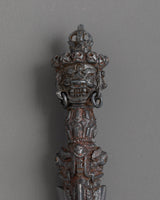
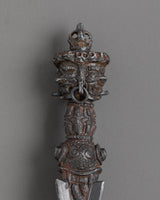
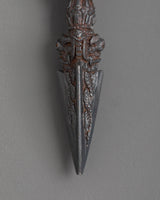
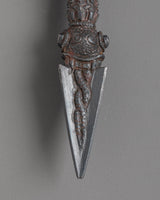
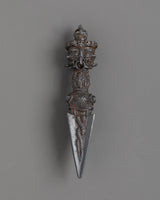
Iron Phurba for Ritual Ceremonies | Symbol of Protection and Purification

100% AUTHENTIC

HANDMADE

FREE SHIPPING
Handmade Iron Phurba for Ritual Ceremonies | Spiritual Tool for Tibetan Buddhist Practices
--------------------------------------------
Size: 10cm (Height) x 2cm(Width)
Weight: 0.080kg
Material: Iron Body
--------------------------------------------
About The Ritual Item :
This Iron Phurba for Ritual Ceremonies is a sacred ritual instrument used in Tibetan Buddhism to ward off evil energy and invoke spiritual protection. This Phurba, which is 10cm in height and 2cm in breadth and weighs only 0.080kg, is skillfully constructed with an iron body and is intended for both ceremonial and spiritual use by Tibetan practitioners. The Phurba, also known as a "ritual dagger," is an essential tool in Vajrayana practices, representing the capacity to cut through illusions and obstructions while also protecting the practitioner.
The design of this Phurba is significant. The triangle blade symbolizes the unity of body, speech, and mind, while the carved designs on the hilt, which often depict powerful protective deities or mythological entities, signify the power and might of Tibetan spiritual teachings. The iron substance gives the Phurba a raw, grounded vitality, transforming it into both a spiritual tool and a work of art. This ceremonial dagger is commonly used in ceremonies to purify, defend, and invoke divine favors.
This Phurba is an effective tool for spiritual change, whether used for meditation, ritual offerings, or as part of a Tibetan Buddhist altar. This Iron Phurba can be used to cleanse negative energy, improve your meditation practice, or add a significant and sacred item to your collection of spiritual instruments. It is both utilitarian and highly symbolic. It denotes Tibetan deities' ferocious protection as well as mental, physical, and spiritual cleanliness.
Introduction To The Phurba :
The ceremonial dagger (Sanskrit: Kila; Tibetan: phurba) is essential for expelling evil and is considered particularly effective in neutralizing the forces obstructing Tantric Buddhist practice. It has ancient origins, first appearing in the Indian Rig Veda as the core blade of the vajra used by Indra to destroy the primordial cosmic snake Vritra. Kila, derived from Sanskrit, was most likely associated with Vedic sacrifices. Meditation on the Vajrakila Tantra, an early Indian scripture first promoted in Tibet in the eighth century by Padmasambhava, one of the founding teachers of Tibetan Buddhism, is used to invoke the three-headed Vajrakila Buddha.
How to Set Up Your Buddhist Shrine?
Find a clean, quiet, and uncluttered spot.
Please set up an altar table and cover it with an altar cloth that calls to you.
Place your sacred item (statue, thangka, or a picture of Buddha) at the center












